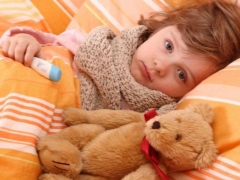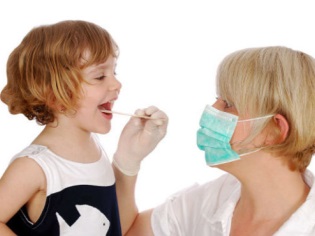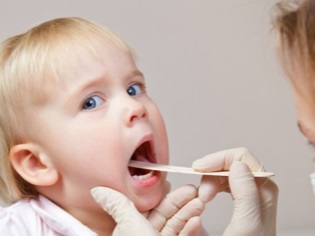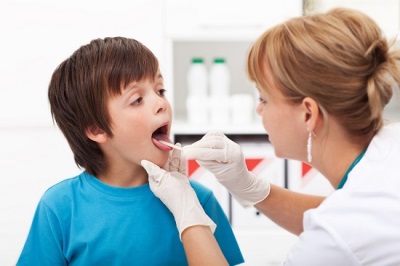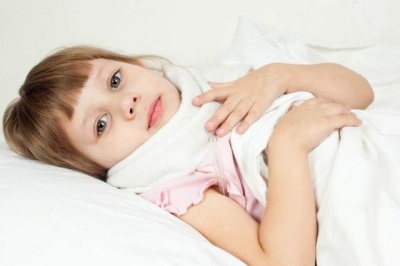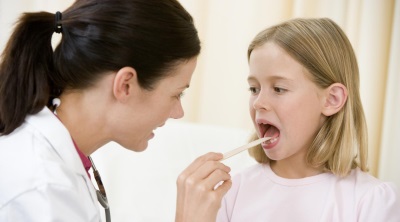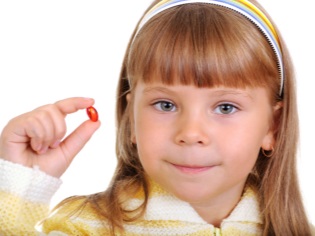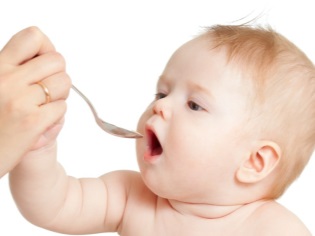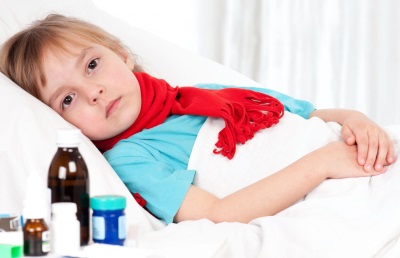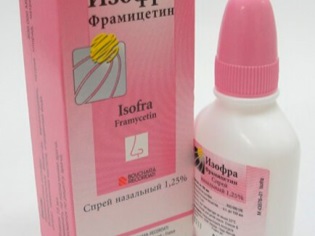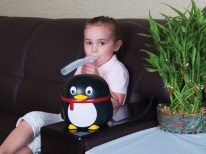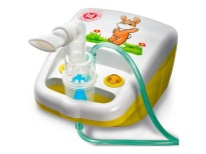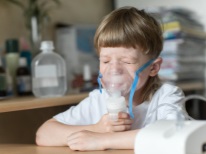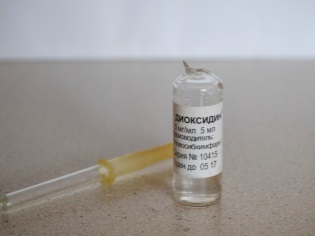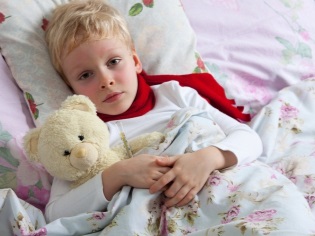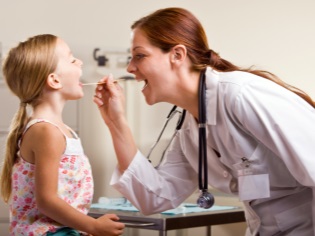Antibiotics for sore throat in children
Acute tonsillitis or tonsillitis is a very dangerous disease, and is most often caused by bacteria. Pest organisms are usually staphylococci, streptococci, pneumococci, mycoplasmas, chlamydia, pathogenic fungi. Antibiotics quite successfully cope with all these pathogens. This approach is used by doctors in the treatment of angina in both adults and children.
Angina can be a complication ARVI or flu. In this case, the pathological bacteria begin to multiply actively against the background of a weakened immunity, and such a sore throat will also require treatment with antibiotics.
Angina is the case when it is necessary to choose the lesser of two evils: despite the rather aggressive effects of antibacterial drugs on the child's body, possible side effects, it is almost impossible to cure angina without antibiotics. And its consequences can kill a child or make him disabled.
If a sore throat is caused by a virus, it will be called a herpetic sore throat. This is the only sore throat that cannot be cured with antibiotics, since antibiotics do not act on viruses at all: their goal is bacteria.
An erroneous antibiotic prescription for such a sore throat will only aggravate the situation. Dysbacteriosis, diarrhea, vomiting, or an allergic reaction will be added to the pain in the throat and general ill health of the child. In case of herpetic sore throat, a competent complex antiviral treatment using antiseptics is required to prevent the development of “bad” bacteria in the throat.
Diagnosis of angina
According to the well-known children's doctor Yevgeny Komarovsky, angina in the understanding of the doctor and angina in the understanding of mom and dad - two completely different things. For parents, any “red throat” is already a sore throat. In fact, the cause of redness of the throat in most cases is the virus, not the bacteria.
You can watch the video of the famous doctor here:
To answer the question of whether the child needs antibiotics for sore throat, the doctor must analyze the bacterial culture. A smear from the tonsils and from the larynx will be sent to the bacteriological laboratory.
Plus, the research is that the physician will know exactly which pathogen has caused the disease and will be able to pick up an effective directional antibiotic. The disadvantage is that it takes a long time to wait for the result of the bakposev - about two weeks. Therefore, the doctor is likely to appoint a child broad-spectrum antibiotic.
A sick baby must have blood and urine taken for tests.
Viral Experienced ENT or a pediatrician (herpetic) sore throat can quite easily determine by eye even without special tests. It differs in characteristic places of localization of papules and is visually different from bacterial angina.
When will the doctor prescribe antibiotics?
- If the sore throat in a child is not caused by a virus.
- If the body temperature of a sick baby has exceeded 38-39 degrees, in some cases temperature maybe over 40 degrees.
- If, during a visual examination, the doctor finds a white, yellow or purulent deposit in the strongly reddened throat, on the tongue, on the tonsils, which will have a film or cheesy structure.
- If the child has enlarged lymph nodes, especially the submandibular.
- If a child complains of severe sore throat, it is difficult for him to swallow and speak.
- If the child feels "aches" in the joints.
- If the baby is sluggish, drowsy, sedentary, his condition is severe.
Penicillin antibiotics cope with angina most effectively. They are followed by cephalosporins and macrolides.
The doctor will prescribe fluoroquinolones as a last resort if the child is severely allergic to the drugs of the previous groups, or for some reason they do not help him. These are “artificial” antibiotics, which have no analogues in nature, they are produced in the laboratory. Fluoroquinolones are contraindicated in children under 12 years old, but even after 12 years, doctors try to use fluoroquinolones with great care.
You can not put the question "edge". What kind of antibiotic is better to treat exactly your child - the doctor decides, and besides, each group of antibiotic drugs has its own advantages.
Penicillins act gently, but briefly and not as much as we would like. Macrolides are slightly more powerful, but are longer excreted from the body. Cephalosporin preparations are more toxic, but very effective.
Much of the prescription of a particular medication will depend on the severity of the sore throat and its type and type.
Angina in children is different: acute primary, secondary somatic (if it accompanies an infectious disease in the clinical picture, for example, scarlet fever), specific (fungal).
A catarrhal tonsillitis (moderately severe, with tonsil lesions) is quite common in the toads. In the treatment of catarrhal angina, doctors often prescribe penicillins and macrolides.
The child can be identified follicular tonsillitis (more pronounced, with a change in the normal values of leukocytes in the blood, the presence of protein in the urine). In the treatment of such angina macrolides are particularly effective.
If the doctor diagnoses “lacunar tonsillitis”, then, as a rule, they will prescribe cephalosporins, because such a sore throat is more pronounced and can occur at a body temperature of about 40 degrees with significant “shifts” of leukocytes and ESR in the blood test.
The most dangerous is angina necrotic. This is a very severe form of the disease with necrosis of individual sections of the tonsils, which spreads to the tongue, larynx, and bow. When treating such a sore throat, the doctor can immediately resort to the fluoroquinolone group drugs.
The more severe the disease, the more powerful and fast-acting antibiotics will require its treatment.
Names of penicillins that are prescribed for a child with angina
Antibiotic name | Antibiotic release form | Age restrictions | Average price in pharmacies |
Capsules Pills Granules for suspension. | Since birth. For babies from 0 to 4 years old - in suspension. From 4 to 12 years old - in the form of tablets. From 12 years old - in capsules. | About 100 rubles | |
Augmentin | Pills Suspension Injectables | Since birth. For children under 5 years old - in the form of suspensions and injections. For children from 5 years and older - tablet form. | In the range of 200-250 rubles |
Dosage soluble tablets | Since birth. | An average of 300 rubles. The most expensive is the dosage of 1000 mg. - 450 rubles. | |
"Bicillin" | Dry matter for the preparation of intramuscular injections | With 2 years. But in special situations at the discretion of the doctor - from birth. | In the range of 550-600 rubles. |
Gramox | Capsules Suspension Powder | Since birth. Capsules - for children after 10 years. | In pharmacies in Russia is now temporarily absent. The ability to purchase the drug is only in pharmacies of Ukraine. |
The names of antibiotics - macrolides, which are prescribed to the child with angina
Antibiotic name | Antibiotic release form | Age restrictions | Average price in pharmacies |
"Erythromycin" | Pills Ointment external. Dry powder for injection. | From 4 months. Up to 1 year - under the supervision of a doctor. | Within 100 rubles. |
Capsules Pills | From 12 years and older | 150-250 rubles | |
Powder for the preparation of suspensions. Pills Capsules Dry matter for injection | With half a year in the form of a suspension. Tablets - for children 6-7 years old. Capsules are recommended for children from 12 years. | About 100 rubles | |
«Sumamed» | Pills Capsules Powder for injection Suspension Powder | From 6 months. Tablet form - from 5-6 years | From 400 rubles |
"Spiramycin" | Tablets, granules to dissolve the suspension. Dry matter for injection. | Tablets - for children from 6 years. Injections and suspensions - to children from birth at the discretion of the doctor. | From 200 rubles |
Names of cephalosporins that are prescribed for a child with angina
Antibiotic name | Antibiotic release form | Age restrictions | Average price in pharmacies |
Pills Capsules Pellets for mixing the suspension. | From 0 to 10 years only in suspension. | Up to 100 rubles | |
Powder for injection | From 2.5 years old and up | From 150 rubles | |
Powder for injection | Since birth | From 50 rubles |
Fluoroquinolone names that are prescribed for a child with angina
Antibiotic name | Antibiotic release form | Age restrictions | Average price in pharmacies |
"Ofloxacin" | Tablets, solution for infusions | With 12 years of vital importance | From 100 to 250 rubles |
Tablets, solution for infusions | With 12 years of age | From 100 to 200 rubles | |
"Moxifloxacin" | Injection | With 15 years of age | From 300 to 600 rubles |
Features of treatment
Treatment of angina sometimes takes place in the hospital (with complicated forms of the disease with very high temperature and even vomiting), but more often at home.
Stay in home conditions most suitable for children, because in a familiar environment, the recovery of the baby always goes much faster. If the doctor does not object to home treatment, you must follow all the prescriptions, and their list will be quite impressive.
- Assigned antibiotics should be taken at regular intervals. The fact is that each antibiotic has a maximum time of action, and so that the antimicrobial process is not interrupted, the next dose should be taken in a timely manner. Usually with two times the drug intake, a break - 12 hours, and with a fourfold intake of a break will be 6 hours.
- Do not stop taking an antibacterial drug, even if the child has become better. Be sure to bring the appointed course to the end. How many days he will be, the doctor will decide. When antibiotics begin to act, the baby usually becomes noticeably lighter, and parents are tempted to stop treatment. Remember, not all bacteria - pathogens in the body of a baby are destroyed by the first batches of antibiotics, and by canceling the drug, you can harm the child.
- Strictly observe the dose! When prescribing the drug, the doctor will calculate the individual dosage, taking into account the child's age, body weight and severity of the disease. Independently calculate all these parameters is not worth it.
- Do not drink antibiotics juice or milk. After all, ascorbic acid contained in juice, or animal proteins in milk, prevent normal absorption of antibiotic from the tissue. It is possible to drink antibacterial agents only with a large amount of ordinary drinking water at room temperature.
- The effectiveness of the antibiotic should be assessed 72 hours after the start of administration. If there is no improvement on the third day, the temperature has not decreased, the general condition of the baby remains sluggish and there are all signs of intoxication, inform the doctor immediately. Probably, the antibiotic is chosen incorrectly, and you need to change the drug to another.
- During the reception of prescribed antibiotics, bacteriophages should also be taken in order to protect the child's body from dysbiosis. The name of the drug will tell you the doctor, most often for these purposes use "Linex", "Atsilakt", "Probifor", "Bifiform, Bifidumbakterin, Florin Forte. But antihistamines, if there is no allergy to the antibiotic, should not be taken.
In parallel with antibiotics, the doctor may also prescribe immunomodulators and vitamins.
Local Antibiotics
Local antibiotics are a great alternative to pills and shots. This is true, but not in the case of a sore throat. Angina is a serious diagnosis that requires a more systematic approach to therapy. Local antibiotics will perfectly help relieve some of the symptoms - reduce inflammation in the throat, pain, but, unfortunately, will not be able to cure the disease entirely.
Local antibiotics for sore throat can be prescribed as an adjunct to fundamental therapy. If it deems necessary a doctor. Common practice shows that children do not need such additional measures. Therefore, pediatricians often use antibiotics in sprays not for acute angina, but for chronic tonsillitis.
On the question of which drugs help with angina locally, more recently it would be safe to say that it is an “Bioparox” aerosol. According to numerous reviews of both doctors and patients, this medicine has recommended itself only from the best side.
However, recently it became known that "Bioparox" ... out of production!
As a reason, manufacturers called it the huge popularity of aerosols. Bioparox was so widespread, and patients used it when they wanted and how much they wanted, without asking the doctors. All this led to the emergence of a large number of new strains of bacteria. They are resistant to "Bioparox". The drug is recognized as ineffective.
According to the research of an international group of experts, a positive result from the use of "Bioparox" in the past few years in 40% of cases was caused by the placebo effect.
Sprays with antibiotics that have not yet lost their effectiveness:
Before applying antibiotic sprays, it is necessary to treat the throat with an antiseptic, and before that, rinse with furacilin solution. Suitable and soda solution, and salt.
In the treatment of follicular sore throat, doctors often allow you to use sprays in addition to disinfection and anesthesia.Oracept"," Faringo spray. " Anginal Spray Octenisept. They do not contain antibiotics.
Inhalation
Steam inhalation in sore throat can not be carried out, because any heating of the place where bacteria live and multiply will only cause an even more intensive growth of microorganisms.
Only nebulizers will be suitable for inhalation during the fight against sore throat.
Inhalations at the initial stages of the development of the disease perfectly help to relieve the inflammatory process in the throat, but they do not cure the sore throat on their own, therefore they cannot be considered an alternative treatment.
Inhalations with an antibiotic should not be prescribed for yourself. Be sure to check with your doctor.
Most often at home in nebulizers use special inhalation forms of antibiotics "Dioxidine», «Ceftriaxone, Streptomycin.
Inhalation with a solution of antibiotic "Tobramycin", which "specializes" in staphylococci, also effectively helps with angina.
General recommendations to parents
- A sore throat child should have its own dish — a bowl, a spoon, a plate. Close contact with other children should also be avoided. Because a sore throat is a contagious disease.
- Microbes that have caused the appearance of sore throat, multiply, multiply and ... shit. These waste products of bacteria cause severe intoxication in the body. Therefore, in the process of treating sore throats do not forget to give your child a lot of drinking. Liquid speeds up the elimination of toxins.
- Do not seek to cure a sore throat quickly, it is impossible. Focus on proper compliance with all regulations. Typically, the treatment of angina from 10 to 14 days.
- The best option for a child during the treatment of angina is considered bed rest.
Some interesting facts
- Angina, according to pediatricians, ranks third in the frequency of occurrence in children, only slightly behind ARVI and ARI.
- Most often, sore throats fall ill in the first and fourth quarter of the year.
- Rural children are less likely to have angina than urban children.
- The most severe sore throat is in children aged 3 to 5 years.
- Among schoolchildren aged 8–9 years, boys are more often ill with sore throats.
To answer the question of whether the child needs antibiotics for sore throat, the doctor must analyze the bacterial culture. A smear from the tonsils and from the larynx will be sent to the bacteriological laboratory.
The opinion of Dr. Komarovsky about when it is necessary to give antibiotics to a child, see the following video.
